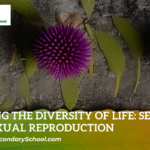Biology and the Scientific Method
Biology, the study of life in all its forms and intricacies, relies on a rigorous framework known as the scientific method to unravel the mysteries of the natural world. This systematic approach empowers biologists to ask questions, design experiments, gather data, and draw meaningful conclusions, contributing to our understanding of life’s diverse phenomena. This article delves into the synergy between biology and the scientific method, shedding light on how this dynamic partnership has shaped our knowledge and transformed our world.
The Scientific Method: A Blueprint for Exploration
The scientific method is a structured approach that guides scientists through the process of investigating natural phenomena. It is characterized by a series of interconnected steps:
- Observation and Question: The journey begins with keen observations of the world. Curiosity sparks questions about why things behave the way they do or how specific patterns emerge.
- Hypothesis: Based on observations and existing knowledge, scientists formulate hypotheses – educated guesses that suggest a potential explanation for the observed phenomenon.
- Experimentation: Designing controlled experiments is a crucial step. Variables are manipulated and controlled to test the validity of the hypothesis and gather empirical evidence.
- Data Collection and Analysis: Precise data collection and rigorous analysis ensure that observations are accurate and reliable. Statistical methods help draw meaningful conclusions.
- Conclusion and Interpretation: The data are interpreted in the context of the hypothesis. Conclusions are drawn, and scientists assess whether the evidence supports or refutes the initial explanation.
- Communication and Peer Review: Scientific findings are communicated through peer-reviewed publications and presentations. This step fosters critical evaluation and replication of experiments.
Biology and the Scientific Method: A Symbiotic Relationship
Biology and the scientific method share a symbiotic relationship that fuels discoveries and advancements:
- Observing Life’s Patterns: Biologists observe the intricate patterns of life, from the behavior of organisms to the genetic sequences that define them.
- Hypothesis Formation: Observations lead to hypotheses that propose explanations for biological phenomena. For example, a biologist might hypothesize that a certain plant grows faster in sunlight due to increased photosynthesis.
- Experimentation and Validation: Experiments in biology involve controlled conditions that isolate variables. For the sunlight hypothesis, a biologist might conduct experiments with plants grown under different light conditions and measure their growth rates.
- Data Collection and Analysis: Biologists gather data on growth rates, analyze the results statistically, and determine whether the data support the hypothesis.
- New Questions and Insights: Regardless of whether the hypothesis is supported or refuted, the scientific method generates new questions and insights that drive further exploration.
- Advancements in Understanding: Over time, repeated experimentation and accumulation of data lead to a refined understanding of biological phenomena, enriching the field’s body of knowledge.
Applications and Impact
The marriage of biology and the scientific method has led to remarkable achievements:
- Medical Breakthroughs: The scientific method underpins medical research, from understanding diseases to developing treatments and vaccines.
- Ecological Insights: Ecology thrives on the scientific method, helping us comprehend the delicate balance of ecosystems and address conservation challenges.
- Genetic Discoveries: Advances in genetics, such as the Human Genome Project, were driven by systematic scientific inquiry and experimentation.
- Biotechnology: The development of genetically modified organisms, gene editing technologies, and synthetic biology stems from the rigorous application of the scientific method.
- Understanding Evolution: The scientific method has been instrumental in uncovering the mechanisms of evolution, reshaping our understanding of species diversity and adaptation.
A Voyage of Discovery
Biology’s union with the scientific method is an ongoing voyage of discovery, guided by curiosity, evidence, and the desire to uncover the truths that govern life. From unlocking the secrets of DNA to understanding the intricacies of ecosystems, this dynamic partnership propels us toward a deeper understanding of the natural world. As we continue to ask questions, formulate hypotheses, and seek evidence, we contribute to the ever-evolving tapestry of biological knowledge, enriching our collective understanding of life’s marvels.




